"Yesterday, December 7th, 1941, a date which will leave in infamy the United States of America was suddenly and deliberately attacked by naval and air forces of the Empire Japan."
President Franklin D. Roosevelt
A few hours before the Pearl Harbor attack, the Commander in chief of the United States Navy’s Pacific Fleet, Admiral Husband E. Kimmel, was on his way to the Fort Shafter Golf Course, located in Honolulu, Oahu, Hawaii, built in 1921 by the famous architect Albert Warren Tillinghast.
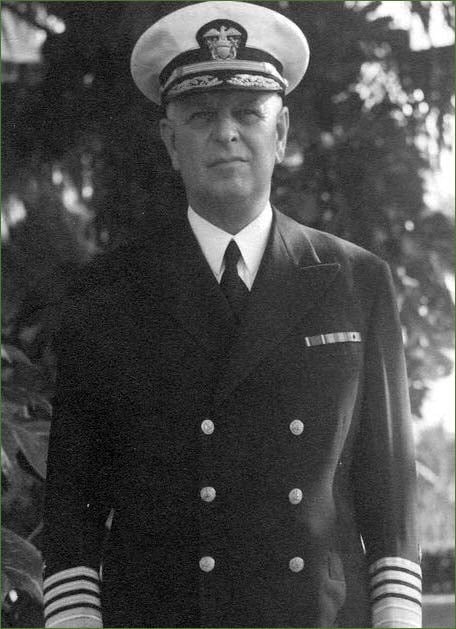
Admiral Husband E. Kimmel
Admiral Kimmel was supposed to play golf with Lieutenant General Walter C. Short, his army counterpart on the island, and Captain Louis Truman, Short’s aide-de-camp on that day. Among the three, Captain Truman was the greatest golf player. He even won the Navy Cup at Fort Shafter Golf Course two weeks earlier.
Unfortunately, this game will never be played, since the Japanese attacked Pearl Harbor, marking the entry of the United States into the Second World War.
But golf had its part to play!
Indeed, the German threat led the American population to support its nation, so as golf!
The most significant help the golf community could bring, was the financial one.
Here is the content of a letter from the Professional Golfers’ Association of America (PGA), sent to President Roosevelt.
My dear Mr. President:
The Professional Golfers’ Association of America is solidly behind you in the present crisis, and we stand ready to provide any service you may ask of us. Already, we are planning a nationwide Golf War Relief Day, the entire proceeds to be used for war relief agencies or in any other way in which you may direct. This program will be participated in by sections of the P.G.A. throughout the United States. You may be sure that we will continue our policy of aiding and assisting in the present war program wherever and whenever we are called upon.
Very sincerely yours,
Ed Dudley, President
Professional Golfers’ Association of America
As a consequence, many golf clubs decided to financially contribute to the war, especially by organizing tournaments to raise funds to the American Red Cross, the Navy Relief, or other military organizations.
Golf, a physical and moral booster!
If eight millions of American citizens joined the armed forces, it was important for the government to have the support of the one hundred twenty-four civilians.
There were many ways to participate to the war effort, especially in the factories. To be effective, it was necessary to keep practice a physical activity.
The mission of boosting the people was assigned to John Brenden Kelly, U.S. director of civilian defense in charge of physical fitness. Sportsman himself and former Olympic rower, who won two gold medals, but also father of the famous Grace Kelly, he promoted physical fitness as being necessary to the war effort, even for non-soldiers.
John Kelly used to play golf and soon realized it could be useful tool to improve men’s condition, since it helped to muscle legs and for cardio.
Therefore, he lectured the United States Golf Association (USGA) on the importance of continuing practicing golf, using France as an example. Indeed, he qualified the Hexagon as “the most physically inactive country in the world” and which had stopped playing golf, in some ways leading to the German invasion.
He even created the position of golf deputy, and named Fred Corcoran, manager of the Professional Golfers’ Association of America (PGA) Tournament Bureau.
He then offered the USGA to encourage its member clubs to conduct the Hale America tournaments, a patriotic series of tournaments which would take place during national days, and supervised by Robert (Bobby) Tyre Jones Jr., a four-time U.S. Open and five-time U.S. Amateur winner, retired from competitive golf after winning the Grand Slam in 1930, Craig Wood, the U.S. Open Champion, and PGA president Edward Bishop Dudley.
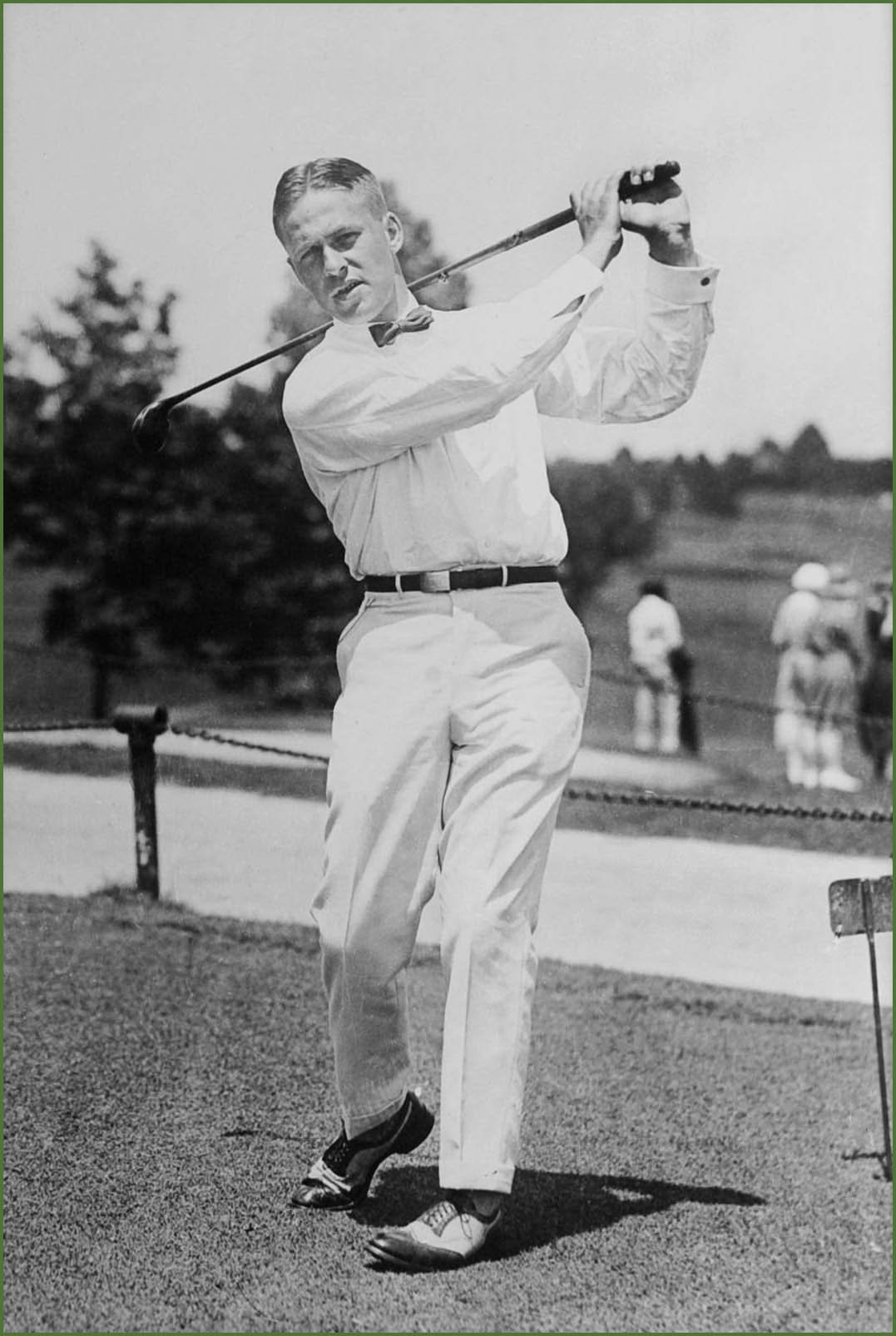 Robert (Bobby) Tyre Jones Jr.
Robert (Bobby) Tyre Jones Jr.
If golf was considered to be physically beneficial, Robert Jones and John B. Kelly were convinced it would also have a positive impact on civilians moral.
The sport was very useful for civilians' well-being, but also for soldiers'!
The United States Army Camp Gordon was established in October 1941, welcoming the 82nd Airborne and 4th Infantry Divisions.
Located in Augusta, Georgia, it was near the Augusta National Golf Club, co-created in 1934 by Robert Jones and Clifford Roberts, an American investment dealer and golf administrator. They both decided the club would financially support the Camp Gordon.
However, Bobby Jones thought it would be very beneficial for soldiers if they could play. As it was complicated for them to come to the Augusta golf course, he had the idea to build one directly inside the camp.
A few months later, a course was built, and Bill Lynch (When War Played Through Spelling), an army private class, was its professional at the course.
Among all the golf clubs involved was the Philadelphia Country Club, which created a War Activities Committee, in order to create ways of assisting the war effort. One of them was to invite wounded soldiers to enjoy its activities, among them golf.
Golf courses, essential allies for World War II
If the beneficial properties of this sport were clear, the courses had now reached the interest of the War Department, which saw it as potential allies.
Indeed, courses could possibly be transformed into landing strips for U.S. airplanes, and its structures could welcome emergency hospitals, temporary convalescent centers, or evacuation posts.
The man in charge of investigating which role each club could have, was Franklin L. Miller.
The USGA counted eight-hundred and twenty-four clubs involved, and there were two-thousand and four-hundred additional private clubs to join the cause.
The probably most significant transformation is the one in the Greenbrier in White Sulphur Springs, West Virginia. This hotel with golf courses opened in 1780 and was famous for its mineral water and its curative properties. It thus became a destination of choice for the Western Elite, in search for the famous properties of the cure resort. Among them, Confederate general Robert E. Lee, Joseph Kennedy, or President Roosevelt’s secretary of state Cordell Hull came there.
In 1941, it was transformed as a refuge for diplomats and foreign news correspondents from enemy countries. One year later, it became the Ashford General Hospital.
Golf clubs, touched by the crisis
Playing golf became difficult because of the rubber restriction, and the impact it had on golf balls production. It thus led some people to think about new materials to continue playing.
Nevertheless, it also led people to steal it.
With the ball crisis came also the necessity to avoid losing your golf balls. At least it was very important to find them.
Another restriction problem which impacted the golf industry was the gasoline penury. Indeed, the courses were usually far away from players’ home, and it became difficult to have access to it. As a consequence, people got ingenious, and came by bicycle, or by horse.
The alcohol restriction was also painful to those players who always enjoyed eating and drinking together after a game.
Finally, finding caddies was more and more complicated. In fact, they went to war, or were seen as a good source of labor for agriculture.
Golf clubs slowly changed their functions during the war…
As a consequence, many golf clubs had to stop its initial usage during World War II. It was the case of the Augusta Golf Club, which closed on October 1st, 1942.
In order to continue gaining money, it turned into a farm, so as other golf clubs’ destiny.
Golf clubs were also encouraged to turn a part of their properties into "Victory gardens", to grow vegetables and fruits for the population and contribute to the war effort.
Golf' s image was threatened
Golf practice during the war was criticized from 1942. Indeed, some people hardly understood how we could continue to play while others were at war. This idea was emphasized by the fact the War Manpower Commission classified Golf course-related as non essential jobs.
Golf superiors were aware of it. The sport was actually the first one to respond to the crisis when the USPA cancelled its national championship in 1942.
Moreover, for many of the tournaments played, the benefits were given to U.S Army associations.
Fortunately, this bad perception was counterbalanced by golf defenders, such as George W. Blossom Jr, president of the USPA from 1942 to 1943. He declared that golf allowed to be physically, mentally and spiritually in shape. And as being in shape was now patriotic, he concluded that it was patriotic to play golf!
The Wisconsin Congressman Lavern R Dilweg, delivered a speech concerning the importance of continuing practicing sport, which went in George Blossom’s sense, mentioning golf.
Indeed, he said that it allowed war workers to relax in the fresh air, continuing to enjoy something that was significant for American life. Here he talked about baseball but it completely applied to golf, agreeing on its patriotic role.
In 1942, we counted two-hundred members of professional clubs enrolled in the army. Among them, the golf icons of the time.
Robert Jones, considered to be the greatest golf amateur, entered the Army in 1942. He was in charge of the filter and information centers in the First Fighter Command but he wanted to be more useful. However, the army was reluctant in risking to have an American idol killed in action. They feared the people’s reaction. Thus, they refused his request to be transferred to the Leavenworth Command and General Staff school.
Eventually, he attended the Army Air Corps Intelligence School in Harrisburg, Pennsylvania, to be a US Army Air Corps Officer. Here, the officers were divided into four: prisoner interrogator, photographic interpreter, operations man, supply person. He was trained as a prisoner interrogator.
After completing the course, he was assigned to the 84th Fighter Wing of the Ninth Tactical Air Command of the 9th Air Force.
On June 7th, 1944, he landed to Normandy, his unit having the mission to take the inland about twenty miles, until they reached an airfield, which they should secure.
Bobby Jones was a target for the Germans. Indeed, his death would have demoralise the allied. Fortunately for him, and for the American people, he lived. But he will never talk about what happened, so as many other soldiers.
At the end of August, 1944, he came back to the United states. He was forty-two, so eligible for a discharge, based on his age. Moreover, his dad was ill.
Sam Snead (1912-2002) enlisted in the Navy in 1942, only a day after winning the PGA championship.
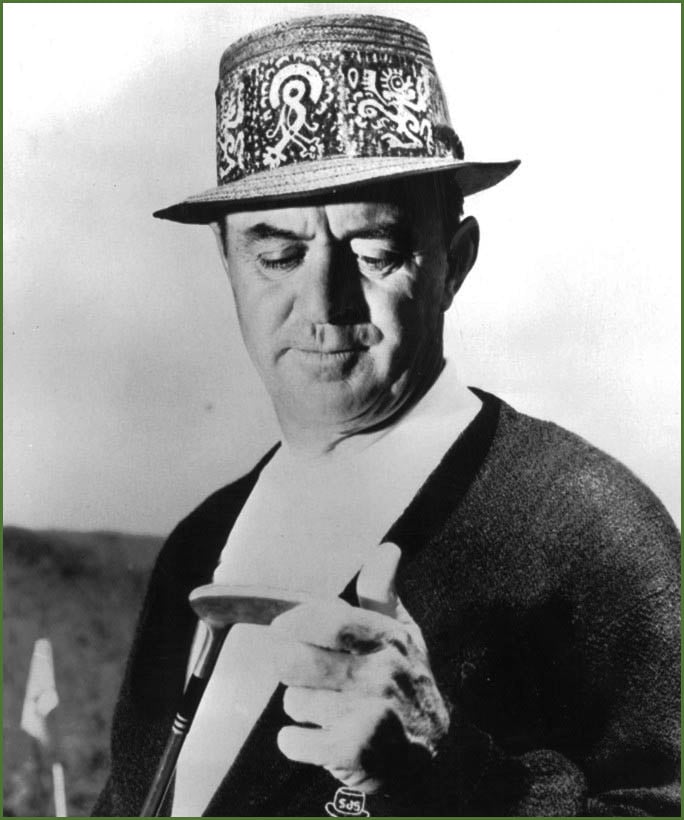
Sam Snead
He trained at the Norfolk Naval Station, but didn’t succeed. However, the officers changed their mind once they learned they had a golf champion in front of them. They wanted him to teach golf to pilots, to improve their focus.
Good news for Snead, Norfolk had a golf course, the Sewell’s Point Golf, designed by Donald Ross in 1926.
A lot of players like him were asked to become golf trainers in military bases, still in the idea to physically keep them in good shape, but also to boost their moral.
It was the case of William P. Turnesa, winner of the U.S. Amateurs in 1938. He was considered as the second best amateur after Bobby Jones.
He enrolled in the Navy, and was part of the Naval Air Station in Hollywood, Florida, where he was also assigned to teach golf.
Another golf star was William Ben Hogan (1912-1997). In 1942, he won six tournaments, including the Hale America National Open Golf Tournament.
On late 1942, he joined the Spartan School of Aeronautics, a civilian flight training school, in Tulsa, Oklahoma. Then, he joined the Army Air Corps one year later.
He then went to the Camps Wolters in Mineral Wells, Texas, to join the Tarrant Field Army Air Corps Combat Crew School.
He was later sent to the Army Air Force Officer Candidates School in Miami. Finally, in November 1943, he became second lieutenant.
We cannot omit John Byron Nelson Jr. (1912-2006) when talking about golf icons! The great players couldn’t serve in the army since he had haemophilia.
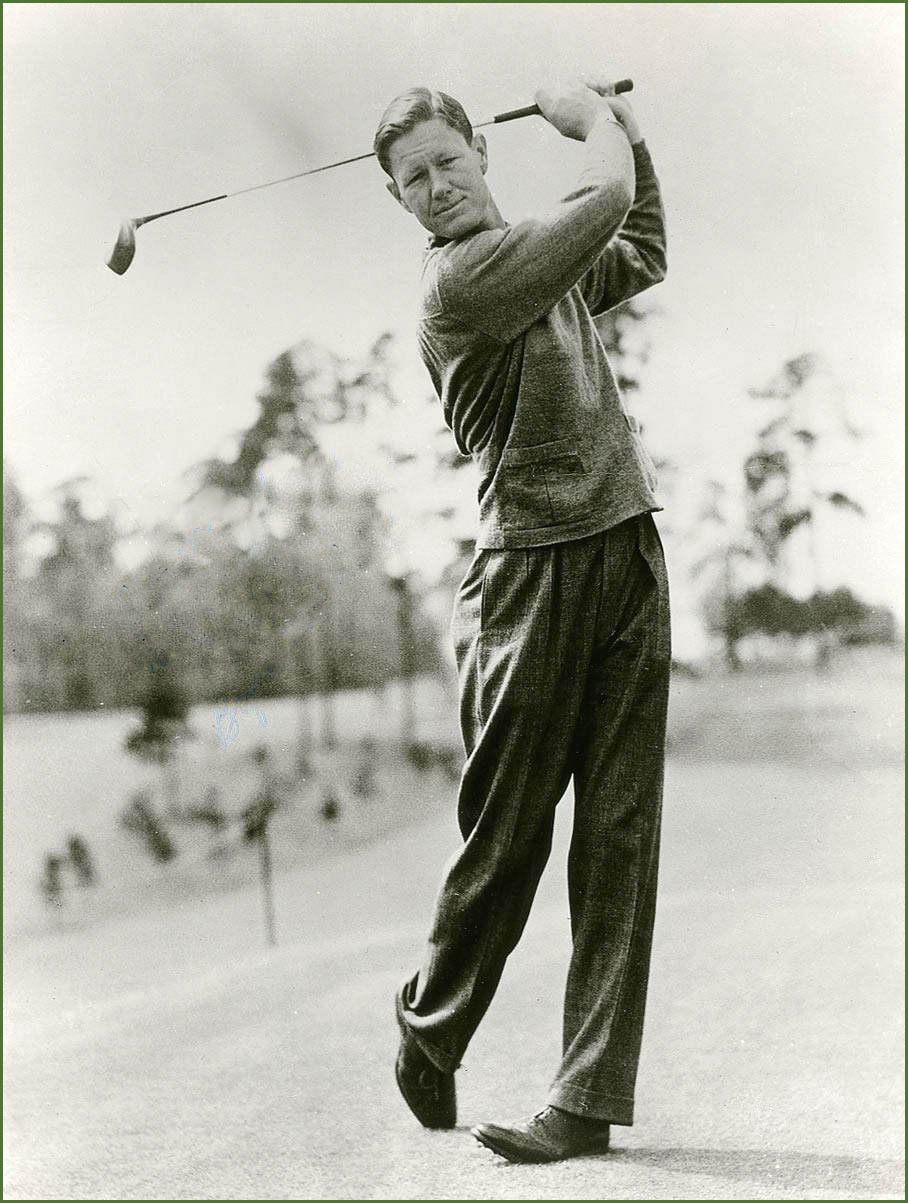
John Byron Nelson Jr.
It was also the case of his colleague Harold McSpaden. Fred Corcoran thus asked them to contribute differently, by participating in exhibitions to raise funds.
Unfortunately, some golfers will never be able to see the golf course again…
Peter Page (When War Played Through Spelling), captain of the Princeton Golf team in 1940 and 1941. He was also president of the National Intercollegiate Golf Association.
During the war, he was second lieutenant in the Marine Corps when he was killed in action in the South Pacific.
Another deadly fate was that of John P. Burke (1917-1943) was the rising star of golf! At only seventeen, he won the Rhode Island Amateur Championship in, 1934. Then, he beat professionals, winning the Rhode Island Open in 1936 and 1938. On the same year, he was sacred at the National Intercollegiate Championship, becoming the most accomplished golfer in Rhode Island.
Like many others golfers, he had to report for army duty. In March 42, he was sent to the Officer Candidates School in Miami. Being there, he studied to become intelligence officer. At the end of 1942, he became second lieutenant. In early 1943, he was deployed to the European Theater of Operations, and his destiny changed, when he went to North Africa.
Here, he was Intelligence Officer for the Middle East Wing of the Air Transport Command in Tunisia. He tragically died after his bunkmate accidentally shot him while cleaning his rifle without any safety measure.
After the war, the John P. Burke Memorial Fund was established in Rhode Island Golf Association to pay tribute to those who served the country during World War II.
Others were luckier, like Dale Bourisseau, who was also a golf player. In 1942, he enlisted in the army, where he went to an officer candidates school. In 1943, he was commissioned as second lieutenant. Then, he was sent to Italy as a platoon leader, in intelligence, where he lost a part of his right leg at the battle of Monte Cassino, near Naples.
After the war, he will create the National Amputee Golf Association.
Lloyd Eugene Mangrum won three tournaments in 1942. He was offered to become professional for the army to teach golf but he refused, wanting to serve. During the Normandy Campaign, on June 6th, 1944, we was among the second wave of soldiers to land on Omaha Beach, but he got a jeep accident, and broke his arm. He was sent to the hospital, at St Andrew's, Scotland, quite ironical for a golfer! Indeed, this historical town is widely known for its golf history.
After recovering, Lloyd Mangrum was in charge of collecting allied’s dead bodies with his truck and storing them in refrigerated tents.
Later, he was sent to the front and fought in the Battle of the Bulge. He will almost die here, and receive two Purple Hearts for his injuries after the war.
When golf invited itself in a camp prisoner…
The Stalag Luft III was a German camp of prisoners, located in Sagan, Poland. It housed mainly British and American Allied Air Force officers. Here conditions were a bit better than in other camps.
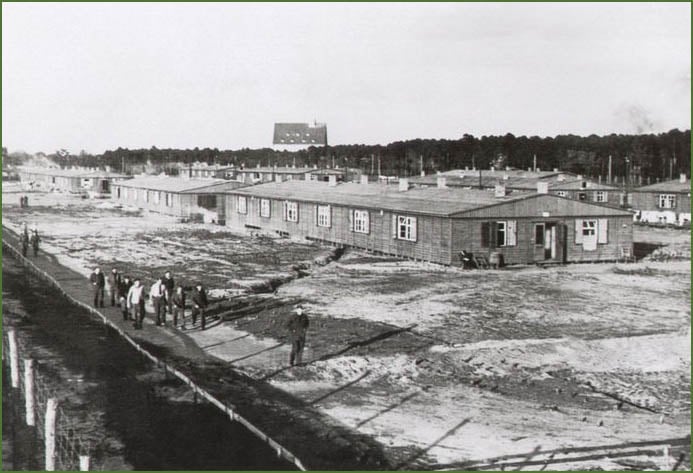
Stalag Luft III
Sydney Smith, captured in Spring 1942, Pat Ward-Thomas, first imprisoned in Dulag Luft, a near Frankfurt, center for Air Force prisoners of war, near Frankfurt, in November 1940, and then transferred to Stalag Luft III in 1943 and Oliver Green, captured in Egypt, in June 1941, were all members of the Royal Air Force, and prisoners at the Stalag Luft III.
Following Sydney Smith’s idea, they began to play golf with what they could find. The group began calling itself the “Sagan Golf Club”. It was formed of skilled golfers. Among them, Danny O’Brien (When War Played Through Spelling), former Scottish schoolboy champion.
As a proper golf club, they had teaching professionals. The role was attributed to Danny O’Brien and Ronnie Morgan (When War Played Through Spelling) were unofficially the teaching professionals. They even built a kind of “nine-hole course”.
But it went beyond the simple fact of playing golf…
Indeed, the idea came to escape. And in the night of March 24th-25th, 1944, two-hundred and twenty prisoners escaped. Seventy-six of them successfully went out. Seventy-three were recaptured, and fifty were executed. It was known as the The Great Escape.
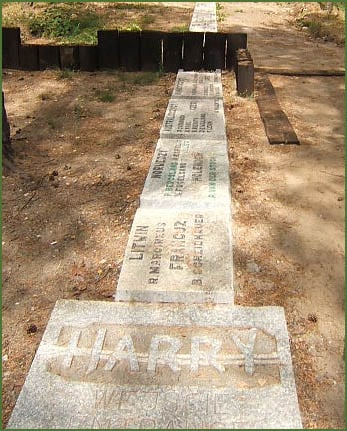
Part of one of the three tunnels, nicknamed "Harry", built to escape of the Stalag Luft III
After the war, Ward-Thomas became a talented golf writer.
Golf also had its part to play for D-Day
Here is the special story of the Conwy Caernavonshire Golf Club. Founded in 1890, it was among the oldest in Wales. It was used by the Allied to build parts of artificial harbor to transport the war machinerie from ship to land during D-Day.
Golf was also present on war zones…
The American Officer Dwight David Eisenhower was a golf aficionado. After D-Day, he installed his Command Post in Reims, and established his headquarters in a schoolhouse. His living quartiers were at the clubhouse at the Gueux Golf Club, which allowed him to continue to play golf.
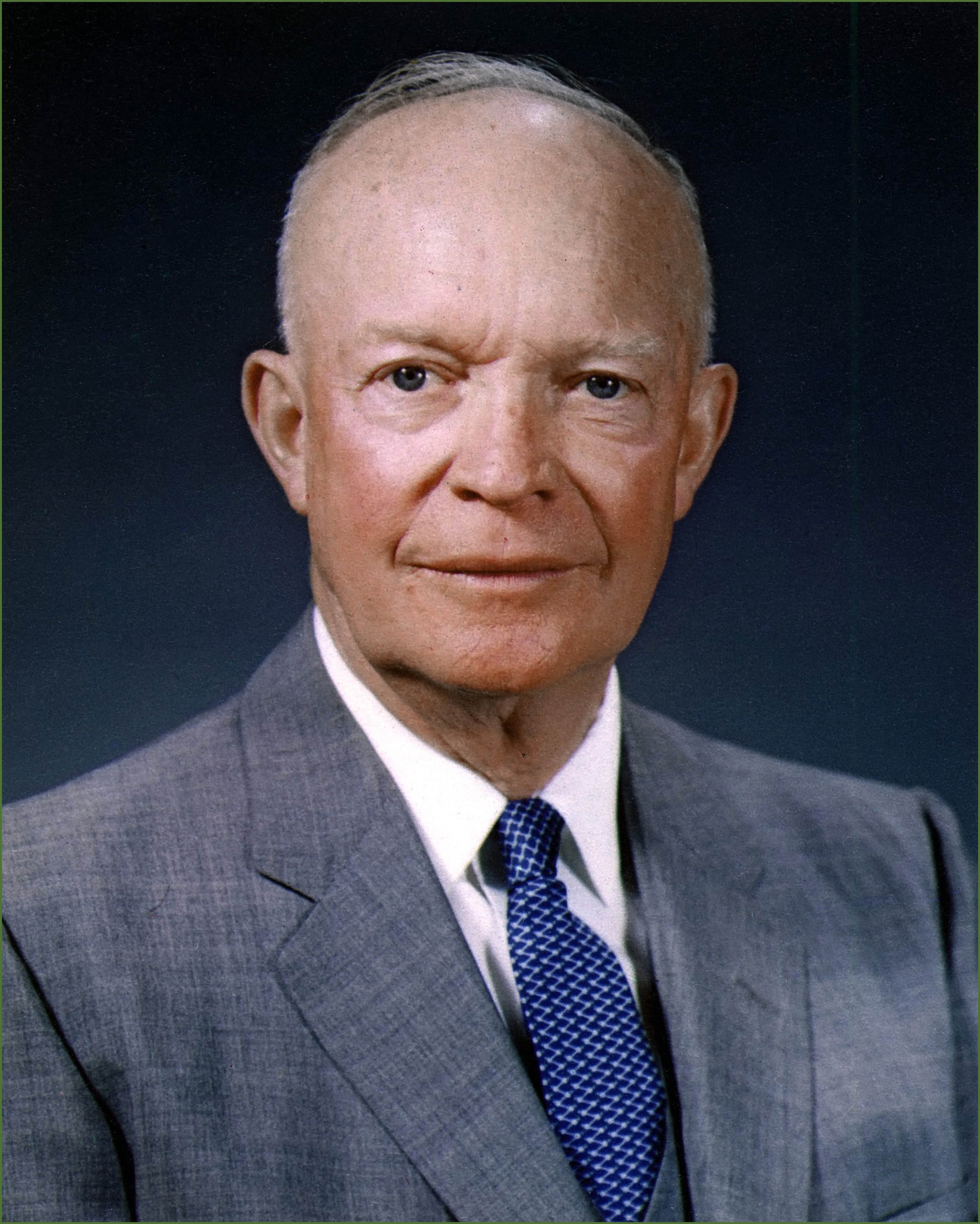
Dwight David Eisenhower
Another story, Dugan Aycock’s. He was sent to North Africa in 1943 and used to play in Casablanca. In 1945, when transferred to Rome, he organised the Rome Open.
Golf Clubs prepared themselves to the Allied victory
In November 20th, 1944, the Augusta National Golf prepared to abandon its meat business to return to the one of golf. One month later, it was reopening. The rehabilitation was done by German prisoners, detained near the Gordon Camp.
Finally in 1945, the allied victory was official. Obviously, Eisenhower came back to London and played golf to celebrate it.
Another good news: tournaments were back, and golf grew in popularity. The favorite for the season was Byron Nelson, nicknamed “Lord Byron”, but also “the Mechanic Man”, or “the Golfing machine”. In the same year, Sam Snead was also successful, winning five tournaments. Ben Hogan won six of them.
An important one was the Masters of 1946, in Augusta. Five players who had been awarded purple hearts for war injuries participated. Lloyd Mangrum, Johnny Palmer (wounded in Japan), Rod Munday, soldier in the 84th Infantry Division, Al Zimmerman wounded while serving the Navy off the coast of Anzio, in Italy, and Buck White, also wounded while serving in the army in Italy. For the Masters, Hogan was the favorite, but Herman W. Keiser won against all expectations.
In December 1945, the Royal Ancient Golf Club of St Andrews extended to Dwight Eisenhower a lifetime honorary membership. The same was done for Winston Churchill, who declined the offer, as he didn’t play golf anymore.
Time them flew, seeing its icons playing their last tournaments. Nelson played for the last time in 1951, Snead in 1965. And Hogan won the U.S Opens in 1948, 1950, 1951, and 1953.
Source: When War Played Through - Golf during World War II, John Strege
Written by Lisa Marie, Trainee at Normandy American Heroes.

















